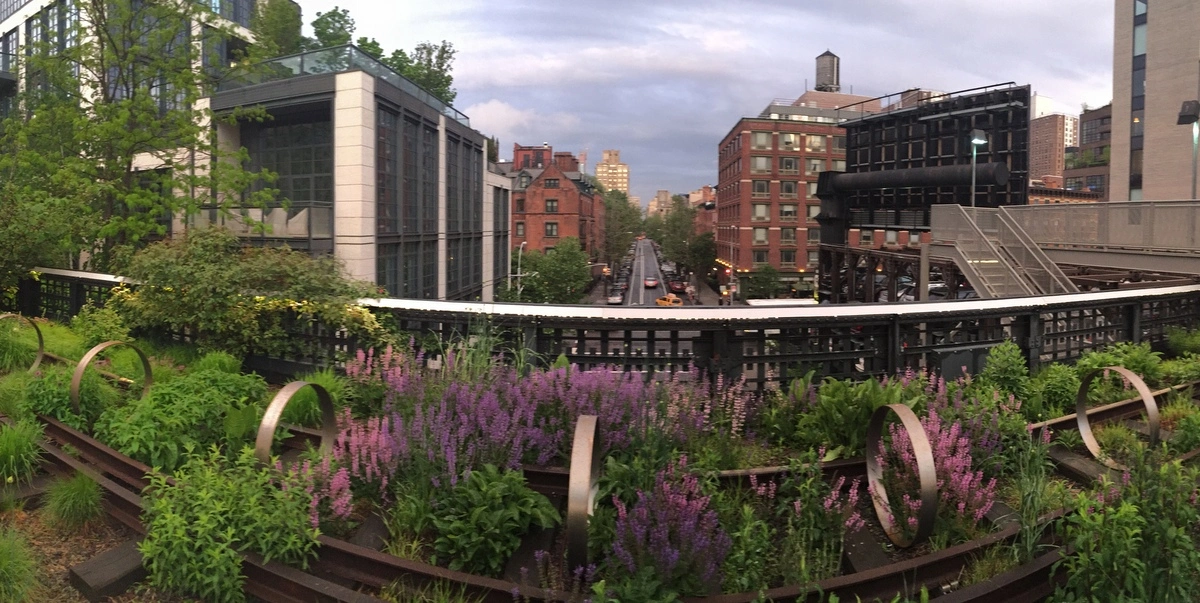The role of initiatives and projects aimed at preserving and expanding green areas in cities, such as parks, squares and gardens, is essential to promote the importance of these spaces in the context of quality of life and environmental balance. With the accelerated growth of urban areas, the preservation of green spaces becomes crucial to counterbalance the negative impacts of urbanization and provide significant benefits for inhabitants and the environment.
Urban green areas play a multifaceted role in improving the quality of life of urban populations. They offer opportunities for recreation, leisure and the practice of physical activities, directly contributing to the health and well-being of citizens. In addition, these spaces provide a conducive environment for socialization, community encounters and connection with nature, essential aspects for social cohesion and human development.
In the environmental context, urban green areas play a key role in mitigating the impacts of climate change and improving air and water quality. They help to reduce the ambient temperature, providing shading and softening the heat island effect. In addition, they act as carbon sinks, helping to reduce greenhouse gas emissions and regulate the local climate. Green areas also contribute to improving air quality by filtering pollutants and absorbing harmful particles, providing a healthier environment for urban residents.
The preservation and expansion of urban green areas should be priority guidelines in public policies for urban planning and environmental management. It is necessary to promote the sustainable development of cities, considering the incorporation of green spaces from the initial stage of urban planning. This involves defining strategic areas for the creation of parks, squares and gardens, as well as valuing and conserving existing green areas.
It is also essential to promote community engagement in the care and preservation of these spaces. The active participation of citizens, through environmental education programs and volunteer activities, strengthens the sense of belonging and shared responsibility in the protection and conservation of urban green areas.
To ensure the effectiveness of preservation initiatives, it is important to adopt proper management practices for green areas, ensuring the maintenance of healthy and resilient ecosystems. This includes the use of sustainable landscaping techniques, the choice of native species adapted to the urban environment, the implementation of efficient irrigation systems and the adoption of integrated pest and disease management practices.
Tree-lined sidewalks, cycle paths and other elements of urban mobility contribute to the connectivity and accessibility of green areas, encouraging the sustainable use of urban space and promoting interaction between citizens and nature.
The preservation of urban green areas must also consider the conservation of biodiversity and the protection of native species. The creation of ecological corridors, which connect different green areas, allows the movement of animals and the dispersion of seeds, helping to maintain biological diversity and restore fragmented ecosystems.
In the context of urban green areas, it is necessary to adopt integrated approaches that take into account the sustainable management of water and the efficient use of natural resources. The implementation of sustainable drainage systems, such as green roofs and permeable areas, contributes to the recharge of aquifers, the reduction of floods and the improvement of water quality.
In addition, the preservation of urban green areas is intrinsically linked to environmental education and population awareness. It is important to promote educational actions that value the importance of these spaces, teaching about the local fauna and flora, the ecosystem services provided by the green areas and the practices of conservation and responsible use.
In this sense, the involvement of educational institutions, civil society organizations, companies and local governments is essential for the success of initiatives to preserve urban green areas. Strategic partnerships and conservation incentive programs can drive the creation and maintenance of these spaces, ensuring that they are valued and protected in the long term.
In several cities around the world, real examples of preserving and expanding urban green areas can be found, providing inspiration and references for similar initiatives. Some of these examples are:
Tijuca National Park – Rio de Janeiro, Brazil

The Tijuca National Park is a veritable green treasure, considered one of the largest urban green areas in the world. Located in the city of Rio de Janeiro, this impressive park covers an extensive area of tropical forest, providing a unique experience of connecting with nature right in the urban center.
The preservation and proper management of the Tijuca National Park are extremely important for the protection of biodiversity. Home to a rich variety of plant and animal species, many of which are endangered, the park is a haven for wildlife amid the hustle and bustle of the city. Its existence contributes to the conservation of ecosystems and to the maintenance of vital ecological processes for the health of the planet.
In addition, the Tijuca National Park plays a crucial role in the conservation of river sources. Its forests play a key role in retaining water, helping to regulate the flow of rivers and protect the region's water resources. This vital function contributes to maintaining the water supply and protecting against natural disasters such as floods and landslides.
The park also offers a wide range of leisure and recreational activities for residents and visitors alike. Stunning trails lead to viewpoints with spectacular views of the city and the coast, providing moments of contemplation and connection with nature. In addition, the park offers opportunities for outdoor sports such as hiking, cycling and climbing, allowing people to enjoy an active life amidst the lush landscape.
When visiting Tijuca National Park, visitors have the chance to learn about the importance of environmental conservation and the need to preserve urban green areas. The park becomes a space for environmental education, making people aware of the importance of biodiversity, ecosystem services and sustainability.
High Line – New York, United States

The High Line is a remarkable example of how creativity and innovation can transform degraded urban spaces into veritable green oases. Located in New York, this visionary project revitalized an old elevated rail line, converting it into a stunning suspended park filled with green spaces, lush gardens, living spaces and pedestrian pathways.
This pioneering initiative brought aesthetic, environmental and social benefits to the city. The High Line not only added a new dimension to New York's urban skyline, it also provided a green haven in the heart of metropolitan bustle. Visitors have the opportunity to enjoy nature, walking among a variety of plants, flowers and carefully selected trees, while enjoying the panoramic view of the city.
From an environmental point of view, the High Line plays a crucial role in promoting biodiversity in a densely urbanized area. By creating a suspended green corridor, it provides a habitat for diverse species of plants and animals, contributing to the conservation of nature in an urban context. In addition, the park helps to mitigate the effects of heat islands, reducing the ambient temperature and improving air quality.
Socially, the High Line has become a vibrant meeting place for locals and visitors alike. Its inviting living spaces, such as benches, cafes and rest areas, provide a welcoming environment for people to gather, relax and take in the beauty of the surroundings. The park also hosts art exhibitions, cultural performances and community events, enriching the city's cultural life and strengthening the sense of community.
Furthermore, the High Line has inspired similar projects in other cities around the world, showing the positive impact of urban regeneration based on green spaces. These initiatives demonstrate how it is possible to transform neglected spaces into vibrant, sustainable and accessible places, providing benefits for residents and visitors.
Bosque de Chapultepec – Mexico City, Mexico

Located in Mexico City, Bosque de Chapultepec is one of the largest urban parks in Latin America, encompassing a vast and diverse area of forest, lakes and cultural spaces. This magnificent park plays a crucial role in improving the quality of life for city residents by offering a variety of benefits to the community.
One of the main functions of Bosque de Chapultepec is to provide areas of leisure, sport, culture and recreation for people to enjoy. Its ample green spaces offer a peaceful retreat from the urban hustle, providing a conducive environment for walks, jogs, picnics and other outdoor activities. In addition, the park is home to renowned museums such as the National Museum of Anthropology and the Museum of Modern Art, enriching the city's cultural life and providing opportunities for learning and artistic appreciation.
The presence of a rich biodiversity is another striking feature of Bosque de Chapultepec. The park serves as an important refuge for native fauna and flora, housing a variety of plant, bird and animal species. This biological diversity contributes to the conservation of nature and to the maintenance of ecosystems within the urban environment, promoting the importance of biodiversity for the health of the planet.
In addition to the recreational and ecological benefits, Bosque de Chapultepec also plays a crucial social role in the lives of Mexico City residents. The park is frequented by people of all ages and backgrounds, providing an inclusive space for social interaction, building community bonds and celebrating cultural events and festivities. It is a place where people can connect with nature and gather around shared activities, strengthening the sense of belonging and local identity.
Bosque de Chapultepec is an inspiring example of how a well-planned and maintained urban park can transform a city, improving the quality of life of its inhabitants. It represents a harmonious fusion of nature and urban life, where people can enjoy the benefits of green amidst the hustle and bustle of the city.
Brasilia National Park – Brasilia, Brazil

The Brasília National Park is a natural gem, a conservation unit that encompasses a vast area of preserved cerrado on the outskirts of the Brazilian capital. This stunning park offers a unique experience of connecting with nature within the urban environment, providing a variety of benefits for visitors and for the conservation of ecosystems.
With its winding trails, panoramic viewpoints and rich biodiversity, the Brasília National Park invites people to explore the beauty of the cerrado. This unique region is characterized by stunning landscapes, with typical vegetation, such as the famous ipês and buritis, in addition to a variety of animals and birds that inhabit the area. Walking through the park's trails offers the opportunity to appreciate the native flora and fauna, as well as providing moments of tranquility and serenity.
One of the main objectives of this park is to promote environmental awareness and the conservation of important cerrado ecosystems. Through educational and interpretive activities, visitors are invited to learn about the importance of preserving the environment, valuing biodiversity and understanding ecological processes. The park becomes an awareness space, inspiring people to adopt sustainable practices and become defenders of the environment.
In addition, the Brasília National Park offers opportunities for leisure and outdoor recreation. Visitors can enjoy picnics, go hiking, watch birds, practice sports and contemplate the stunning landscapes that the cerrado provides. These activities not only promote physical and mental health, but also strengthen people's connection to nature and encourage a more active and balanced lifestyle.
The existence of the Brasília National Park is extremely important for the conservation of the cerrado ecosystems. This region is considered a biodiversity hotspot, harboring a variety of endemic and endangered species. Preserving these ecosystems is vital for maintaining environmental health, protecting water resources and mitigating climate change.
Park Guell – Barcelona, Spain

Designed by renowned Catalan architect Antoni Gaudí, Park Güell is an iconic example of how architecture can seamlessly merge with nature. Located in Barcelona, Spain, this stunning park offers a unique experience for visitors, highlighting the importance of preserving green areas in an urban context.
One of the hallmarks of Park Güell is its lush gardens, which organically combine natural and architectural elements. Gaudí made the most of the terrain's rugged topography, creating terraces and winding paths that blend seamlessly with the surrounding vegetation. Carefully selected plants, trees and flowers add a touch of magic and enchantment to the environment, creating a spectacular setting for visitors to explore.
Another highlight of Park Güell is the quirky sculptures and unique architectural details that can be found throughout the park. Gaudí incorporated surrealist elements, colorful mosaics and organic shapes into his creations, creating a truly unique and captivating environment. Each sculpture and architectural structure tells a story, providing an enriching artistic and cultural experience for visitors.
In addition to its aesthetic beauty, Park Güell offers breathtaking panoramic views of the city of Barcelona. Located at the top of a hill, the park provides a privileged view of the city, with its streets, buildings and the sea in the background. These magnificent views invite visitors to appreciate the urban landscape in contrast with the exuberant nature of the park, highlighting the importance of harmonious integration between urban life and the preservation of green areas.
The existence of Park Güell also serves as a reminder of the importance of preserving green areas within an urban context. As cities grow and develop, it is essential to reserve spaces for contact with nature, both for the well-being of people and for the conservation of biodiversity. Park Güell is an inspiring example of how it is possible to create sustainable urban environments, where architecture and nature coexist harmoniously.
These examples demonstrate how the preservation and expansion of urban green areas can bring significant benefits to cities, including improving the quality of life, conserving biodiversity, promoting health and strengthening a sense of community. By seeking inspiration from these initiatives, it is possible to create more sustainable and resilient urban spaces, where nature and the built environment coexist harmoniously.




